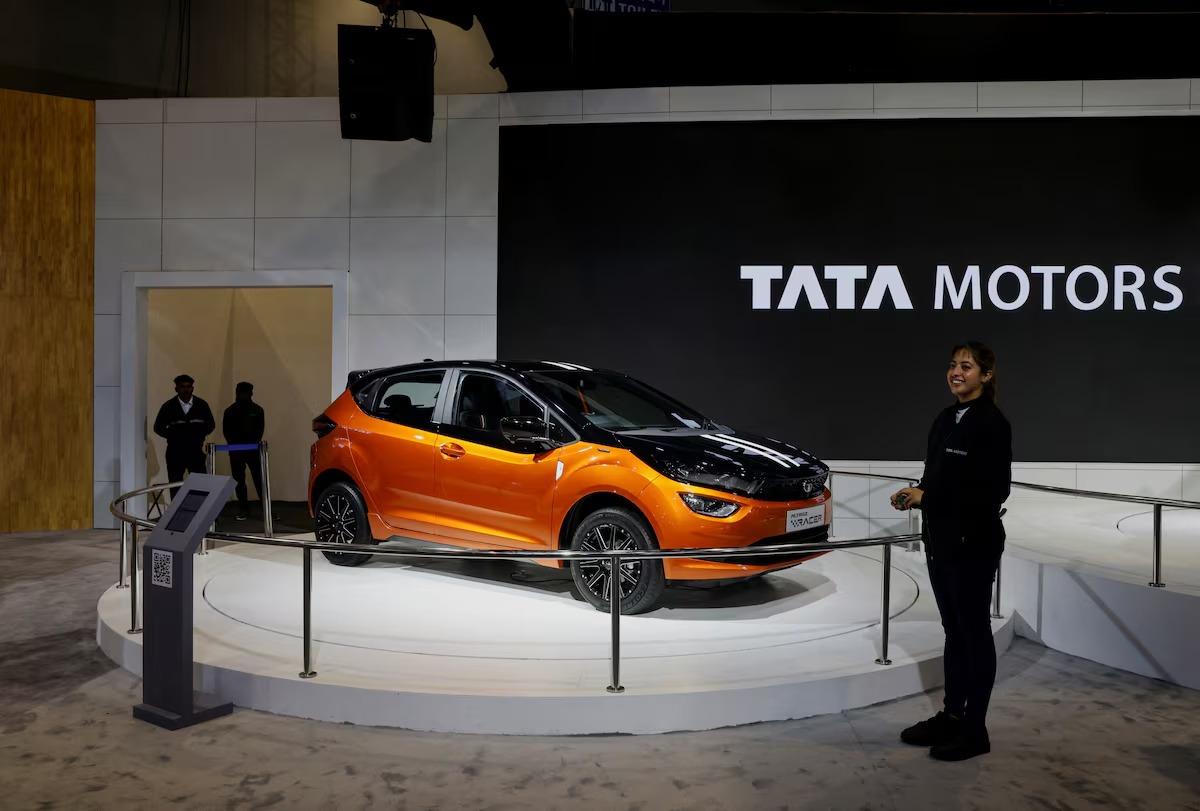Tata Motors on Friday reported a 62.2 per cent decline in consolidated net profit to Rs 4,003 crore in the June quarter, impacted by volume decline across segments, drop in JLR profits due to US tariffs and high base effect due to gain from sale of discontinued operations.

Photograph: Anushree Fadnavis/Reuters
The auto major had posted a consolidated net profit of Rs 10,587 crore in the April-June quarter of the previous fiscal, Tata Motors Ltd (TML) said in a regulatory filing.
Total revenue from operations stood at Rs 104,407 crore against Rs 107,102 crore in the year-ago period, it added.
TML’s performance in the quarter was impacted by volume decline in all businesses and a drop in profitability primarily at JLR, the company said.
Following the amalgamation of Tata Motors Finance Ltd (TMFL) – a wholly-owned step down subsidiary of the company – into Tata Capital Ltd, the company had received equity shares of TCL amounting to Rs 8,016 crore over the book value of net assets transferred as at appointed date of April 1, 2024, amounting to Rs 4,975 crore as gain on sale of discontinued operation in consolidated results, the filing said.
“Despite stiff macro headwinds, the business delivered a profitable quarter, supported by strong fundamentals.
As tariff clarity emerges and festive demand picks up, we are aiming to accelerate performance and rebuild momentum across the portfolio.
Against the backdrop of the upcoming demerger in October 2025, our focus remains firmly on delivering a strong second-half performance,” Tata Motors group CFO PB Balaji said.
Addressing an earnings call, he said, “In the current quarter, we (JLR) have got hit by almost 250 million pounds on (US) tariff charges because even though the deal (UK-US trade deal) was announced on May 8, it got ratified only on June 30, and it is not with retrospective effect.”
Going forward, he said the correction for the reduction in tariffs from 27.5 per cent to 10 per cent under the US-UK trade deal and 27.5 per cent to 15 per cent, under the US-EU deal, along with the removal of the penalty for emission in the US will play through.
“Net impact is what we want to figure out a way to manage through the rest of the year,” he said, adding that while the US demand is holding up, China has introduced luxury tax on all imported vehicles and “we have to figure out a way to manage that”.
JLR revenues were down by 9.2 per cent to 6.6 billion pounds, impacted by significant new US trade tariffs on the UK and EU-produced cars exported to the US, and the planned legacy Jaguar wind-down.
“We are grateful to the UK and US Governments for delivering at speed the new UK-US trade deal, which will lessen the significant US tariff impact in subsequent quarters, as will, in due course, the EU-US trade deal announced on 27 July 2025,” JLR outgoing CEO Adrian Mardell said.
Looking ahead, he said, “We remain focused on delivering our transformational Reimagine Strategy, including investing 3.8 billion pounds this financial year to support the development of our next-generation vehicles, including our stunning new electric Range Rover and Jaguar models.”
In the passenger vehicles segment, Q1 FY26 wholesale volumes stood at 1,24,800 units, down 10.1 per cent on account of industry decline and transitions for new models of Altroz, Harrier and Safari, the company said, adding that it continued to ensure controlled channel inventory growth.
“Q1 FY26 was a subdued quarter for the passenger vehicle industry, with volume pressures persisting across most segments.
“Demand softness weighed on overall performance, although the Electric Vehicle category remained a bright spot, supported by new launches and growing customer interest,” Tata Motors Passenger Vehicle Ltd and Tata Passenger Electric Mobility Ltd Managing Director, Shailesh Chandra, said.
On the way ahead for PVs, the company said that while overall industry growth is expected to remain subdued, Tata Motors is well-positioned to leverage its new launches, including hatchbacks and SUVs, while continuing to build on the EV momentum.
In the commercial vehicles segment, the company said it posted wholesales at 88,000 units, down 6 per cent.
“Q1 FY26 was a challenging quarter for the commercial vehicle industry, with subdued demand across key segments impacting overall performance.
“We also witnessed a decline in domestic sales volumes, reflecting broader market softness and delayed fleet replacement cycles, while segments like Buses and Vans showed resilience and our International Business delivered growth,” Tata Motors Ltd executive director Girish Wagh said.
On the outlook for CVs, Tata Motors said, “With forecasts for a healthy monsoon across the country, reduction in repo rate and renewing thrust on infrastructure development, we expect volumes to improve progressively in the coming quarters.”



